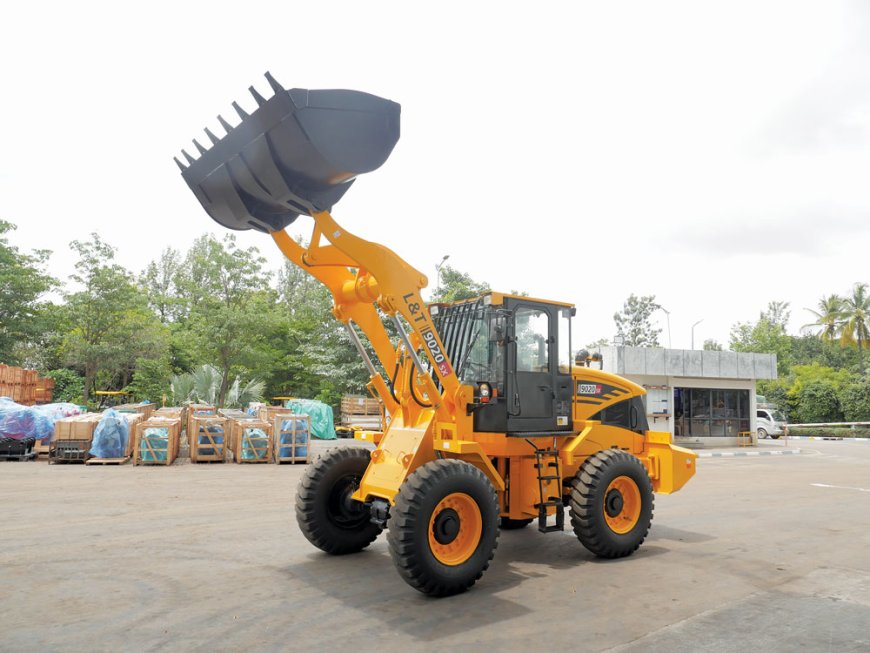In our 76 years of partnering India in nation-building, we have believed superior after-sales service is the key differentiator for customers.
Vivek Hajela VP, Construction Equipment Business, Larsen & Toubro The economy is on a slow growth path this year. What will be the impact of this on construction and the Wheel Loader market?

The economy is on a slow growth path this year. What will be the impact of this on construction and the Wheel Loader market?
Of late, demand for Wheel Loaders (WL) has started picking up in the industrial segment. The coal mining sector is also expected to experience good growth following a shortage arising from elevated prices of imported coal and steel on account of improved prospects in the export market. The contractor and hiring segments continue to be in wait and watch mode. Overall demand is likely to remain soft this year.
In the last two years, successive waves of the Covid-19 pandemic have severely impacted demand for Construction Equipment, resulting in degrowth. Although the Government’s continued impetus on infrastructure development translated into various contracts being awarded, demand in the sector has not revived.
Significant price increase arising from the transition to CEV-IV compliant wheeled equipment and a steep rise in steel prices dampened the market considerably. The hiring segment, which contributes significantly to the demand for Wheel Loader, has stayed away from buying due to stagnant rental rates.
We expect the current year to be better than the last two.
Tell us about the key developments, designs, and trends in the Wheel Loader market in terms of hp/tonnage, and shift towards higher capacity Wheel Loaders?
Wheel Loaders with payload capacities between 3 and 3.5 Ton will continue to contribute to the bulk of demand. Newer applications in industries like steel, coke, cement and general construction for material handling are emerging due to increased mechanisation. Traditionally these sectors were either engaging manual labour or using Backhoe Loaders.
For Wheel Loader customers, the operational economy plays a significant role rather than costly features. How do you look at the after-sales services as a key in this direction?
At L&T Construction & Mining Machinery, we aim to reach out to customers in 3-4 hours because we believe ‘In Service Lies Success’. And in our 76 years of partnering India in nation-building, we have believed superior after-sales service is the key differentiator for customers.
We have developed capabilities and invested in creating infrastructure to provide quality service. A nationwide domestic network of zonal and territory offices and 30 distributors ensures fast response. We also have six strategically located service stations for undertaking major repairs.
L&T is also installing tracking capabilities in machines for round the clock performance monitoring, timely services and higher uptime. EquipCare, a toll-free facility, allow customers to record service requirements on a 24×7 basis. The facility provides a deadline within which the service is rendered. They can also register their feedback based on which we constantly improve restoration time with technology as an enabler. We are continually improving our service delivery and creating more value in after-sales.
What are the attachments available for Wheel Loaders? How do you view the potential for this segment?
We are constantly looking at increasing the value proposition for Wheel Loaders by making them more versatile and suitable for more applications. We introduced Dozer blades five years ago, and today it is a standard attachment for haul road maintenance in open cast mines. Due to their faster mobility, dozer attachment is widely used in remote and hilly road construction. We have also introduced a multipurpose bottom opening bucket and multi-tine wood grapple attachment. We firmly believe that the development of newer attachments would immensely increase the acceptability of Wheel Loaders due to faster mobility and cut down costs in various applications. This would also significantly increase demand for these machines as India’s construction and infrastructure sector gains momentum.
What are the key challenges and suggestions to address those challenges faced in the Wheel Loader segment?
Apart from a rise in Wheel Loader prices following the CEV IV emission standards and a steep hike in commodity prices, factors affecting customers include higher fuel, lubricant and DEF prices. FIs and banks finance almost 90% of machines. Rising finance costs and a cautious approach by financers have also impacted the industry.
We expect the adverse impact to moderate as commodity, fuel, and lubricant prices soften in the next few months. We expect the Government to continue its aggressive stance on infrastructure development. However, we also need the State Governments to chip in on this front for faster growth.
How do you look at the future market for Wheel Loaders?
We believe that Wheel Loader is one of the basic material handling equipment. It offers excellent mobility and cost efficiency for handling any raw material.
India is one of the fastest-growing large economies with a substantial developmental deficit. As the economy grows, urbanisation and infrastructure development requirements will accelerate. This would fuel demand for Wheel Loaders from the sector like general construction, infrastructure, and core industries like power, steel, cement, mining etc.
In the medium to long term (four-five years), we expect the market to maintain a 12-15% growth.
Hits: 2








